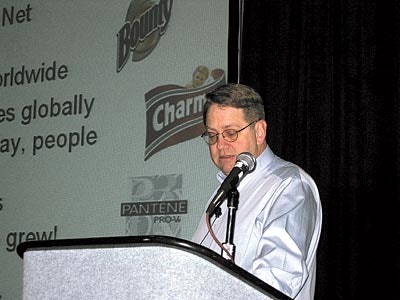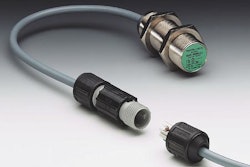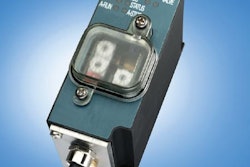Among the highlights of the recent OMAC Annual Meeting was a January 29 presentation by E.L. Skip Holmes of Cincinnati-based Procter & Gamble. Holmes is associate director of control and information systems in the corporate engineering technologies group at P&G. Formally titled Business drivers in CPG and the strategic view of packaging, Holmes’s presentation amounted to nothing less than a ringing endorsement of the work being done by the OMAC (Open Modular Architecture Controls) Packaging Workgroup.
The underlying question behind Holmes’s presentation was “Why should we [at P&G] care about OMAC?” Answer number one, he proposed, is because the modularity, interoperability, and openness promoted by the OMAC guidelines dovetail nicely with the company strategy formulated at P&G since a recent downturn.
“As we saw our stock tank and our CEO step down prematurely for the first time ever at P&G, a change in strategy was clearly needed,” said Holmes. “One strategy we adopted was to cut capital spending. But we couldn’t just stop spending, not with new products in the pipeline. We had to spend differently. OMAC was vital in helping us achieve this objective because OMAC promotes industry-wide Plug-and-Pack standards, and standards drive the cost of equipment down. Standards bring simpler integration and troubleshooting. Applying standards means simpler applications and better software, so we can better leverage our existing staff.”
As proof of P&G’s progress in reducing capital spending, Holmes displayed a chart that showed just how much capital spending has been reduced: from nearly 8% of Net Outside Sales in 1999/2000 to 3% of NOS in 2002/2003.
The next rhetorical question Holmes aimed at his audience went like this: Does the work of OMAC give away our competitive advantage by bringing greater integration and interoperability to all manufacturers, including those with whom P&G competes? Holmes’s answer was a defini-tive “No.”
“Our competitive advantage does not lie in integration,” he explained. “It’s in our proprietary algorithms and our unique application of technology that our advantage lies. It’s our knowledge that brings it all together. This is how we achieve differentiation.”
What’s more, Holmes continued, the work of OMAC can directly improve P&G’s bottom line, because the more widely OMAC guidelines are adopted, the easier (and cheaper) it will be to integrate machines. Furthermore, multiple OEMs will be better able to arrive at common solutions, and the skills of existing P&G staff can be better leveraged, said Holmes.
10% of three people
Holmes pegged P&G’s investment in OMAC over the past few years at 10% of three people. And the return on that investment? “We think we can save as much as $15 million with Plug-and-Pack alone,” said Holmes. In addition, speed to market, he said, could be greatly increased.
“We don’t take our investment in OMAC lightly,” said Holmes. “Nor do we sit on the sidelines. We want to make a difference, and we want a direct role in making that difference.”
“So why care about OMAC?” Holmes asked as he neared the end of his presentation. Once again, he had the answers ready: Because it makes financial sense, it should deliver initiatives faster, it solves some important business challenges, and it aligns with P&G’s business strategy.
In parting, Holmes challenged the OEMs and technology providers in the audience to continue their efforts in spreading the OMAC guidelines. He cautioned them, however, to avoid “geek speak” and the overuse of acronyms, and to stick to business language and business benefits. “That way,” said Holmes, “we can make a breakthrough step in communicating to packaging professionals and the business community at large how good OMAC is.
The progress made by my folks has been encouraging. Drive these concepts and guidelines until they become industry standards. Press on. Don’t
give up.”


























